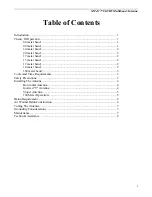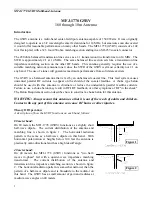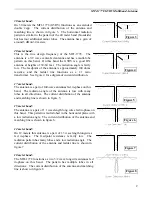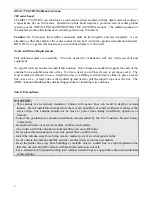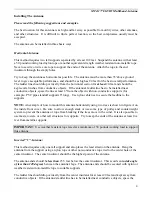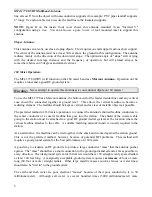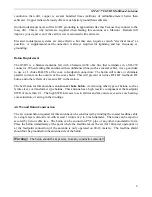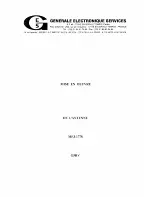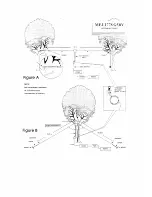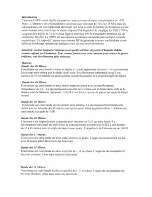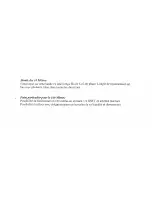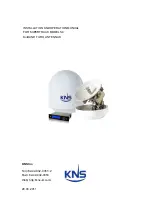
MFJ-1778 G5RV Multiband Antenna
4
Installing The Antenna
Please read the following suggestions and examples.
The best location for this antenna is as high and far away as possible from utility wires, other antennas,
and other structures. It is difficult to find a perfect location, so the best compromise usually must be
accepted.
The antenna can be installed in three basic ways:
Horizontal Antenna
This method requires two tall supports separated by at least 102 feet. Suspend the antenna with at least
a 50 pound working load nylon rope or another equivalent strength weather resistant non-metallic rope.
Never use wire or wire core rope to support the ends of the antenna. Attach the rope to the end
insulators through the empty holes.
Try to keep the antenna as horizontal as possible. The antenna must be more than 35' above ground
level to give acceptable performance, and should be as high as 80 feet for the best overall performance.
The ladder line should drop vertically from the horizontal section for
at least
20 feet and should be
kept several inches from conductive objects. If the antenna's ladder line has to be installed near
conductive objects, space the line at least 6" from the object with non-conductive supports (for
example: PVC pipe standoff supports 6" long). Use nylon cable ties to secure the feedline to the
supports.
NOTE:
An example of how to mount this antenna horizontally using two trees is shown in figure A on
the inside front cover. Be sure to allow enough slack or use some type of pulley and counterweight
system to prevent the antenna or rope from breaking if the trees move in the wind. It is also possible to
use masts, towers, or other tall structures for supports. Try to keep the ends of the antenna at least five
feet from metallic supports.
IMPORTANT:
Use weather resistant rope rated at a minimum of 50 pounds working load to support
this antenna.
Inverted "V" Antenna:
This method requires only one tall support and also places the least strain on the antenna. Hang the
antenna from the support using a nylon rope or other non-conductive rope tied to the center hole of the
center insulator. The center insulator should be the highest point of the antenna.
The antenna ends should be
less than
25.5 feet below the center insulator. This avoids an
inside angle
of less than 120 degrees
between the antenna's legs. The antenna ends should be secured with nylon or
weather resistant non-metallic rope to suitable supports.
The ladder line should drop vertically from the center insulator for at least 20 feet and kept away from
conductive objects. If the antenna's ladder line has to be installed near conductive objects, space the


